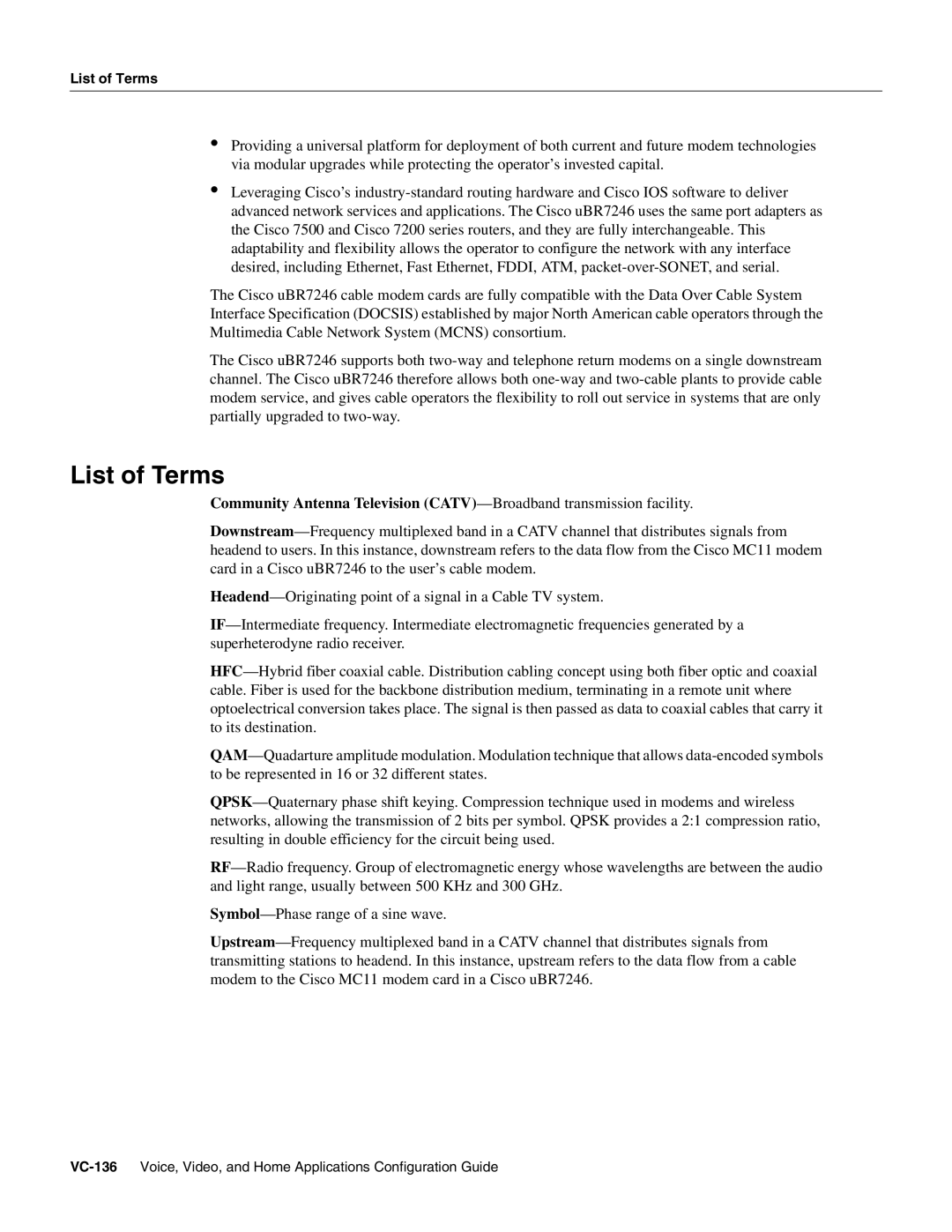uBR7246 specifications
The Cisco uBR7246 is a versatile edge router designed primarily for cable operators wishing to deliver high-speed Internet, telephony, and video services over hybrid fiber-coaxial (HFC) networks. This router is part of Cisco's extensive line of broadband access solutions, addressing the increasing demand for bandwidth among consumers and businesses alike.One of the uBR7246's main features is its ability to support a wide range of broadband technologies including DOCSIS (Data Over Cable Service Interface Specification) and EuroDOCSIS. The router is designed to facilitate the delivery of high-speed data services while allowing for flexible configurations that adapt to evolving network technologies. This is crucial for operators looking to maximize their network efficiency and future-proof their infrastructure.
The uBR7246 is equipped with multiple modular slots, enabling service providers to customize the router according to their specific needs. High-capacity interface cards can be added to support various types of connections, such as Ethernet and TDM (Time Division Multiplexing), thus offering scalability. With support for both DOCSIS 1.0 and advanced versions like DOCSIS 3.0 and 3.1, the router can handle increased data rates and offer maximum efficiency in terms of bandwidth utilization.
Security features are integral to the uBR7246, as it employs advanced measures such as encryption and robust authentication protocols to ensure that subscriber data remains secure. This is particularly vital in an era where cyber threats are pervasive, and customer trust is essential.
In terms of performance, the uBR7246 offers exceptional throughput, capable of efficiently managing vast amounts of traffic without degradation of service. Advanced Quality of Service (QoS) mechanisms help prioritize traffic, ensuring that high-demand applications like video streaming and VoIP receive the necessary bandwidth they require for optimal performance.
The router is also designed with operational ease in mind, offering centralized management capabilities through Cisco's suite of management tools. This allows operators to monitor performance, manage configurations, and troubleshoot issues more efficiently, reducing downtime and enhancing service reliability.
In summary, the Cisco uBR7246 is a powerful and flexible solution that meets the demands of modern broadband delivery. Its advanced technologies, modular design, high-level security features, and robust performance make it an ideal choice for cable operators aiming to provide high-quality services to their subscribers while staying ahead of the competition.
